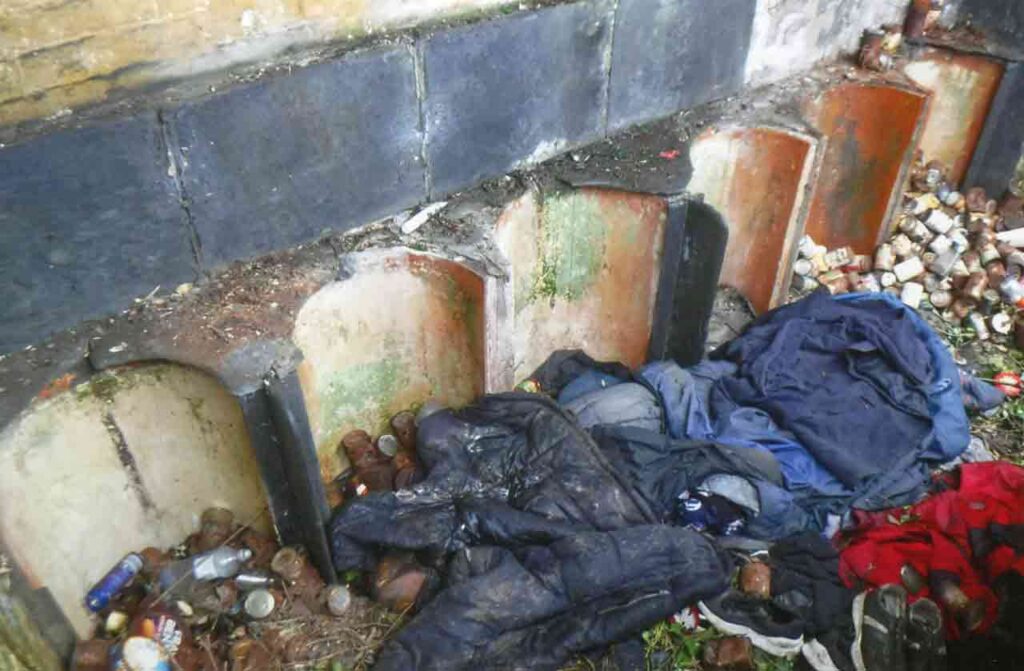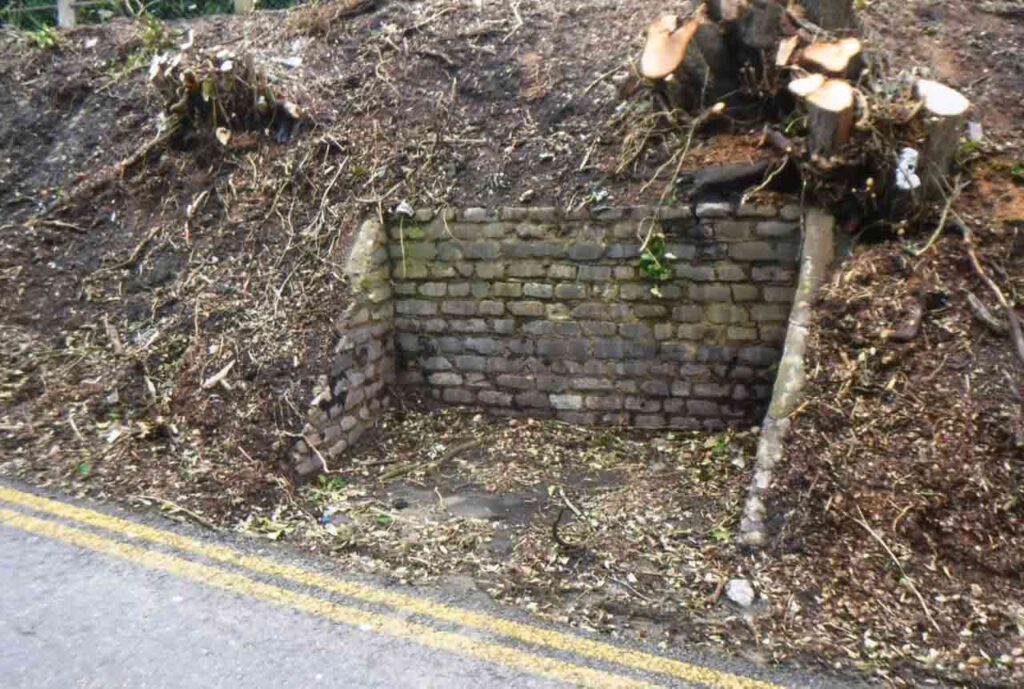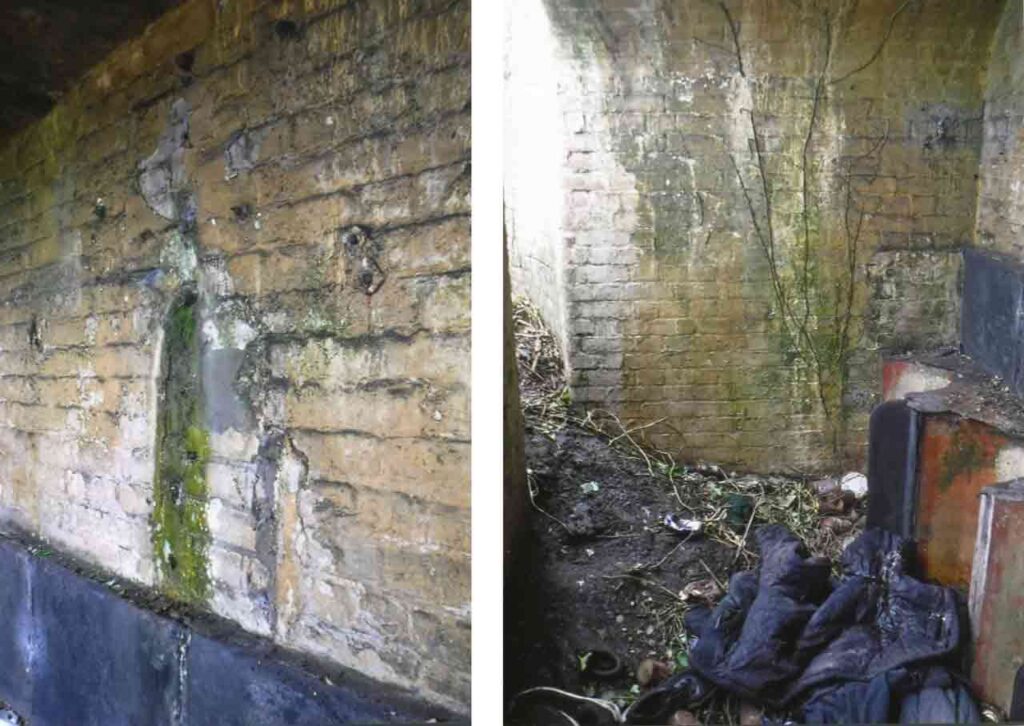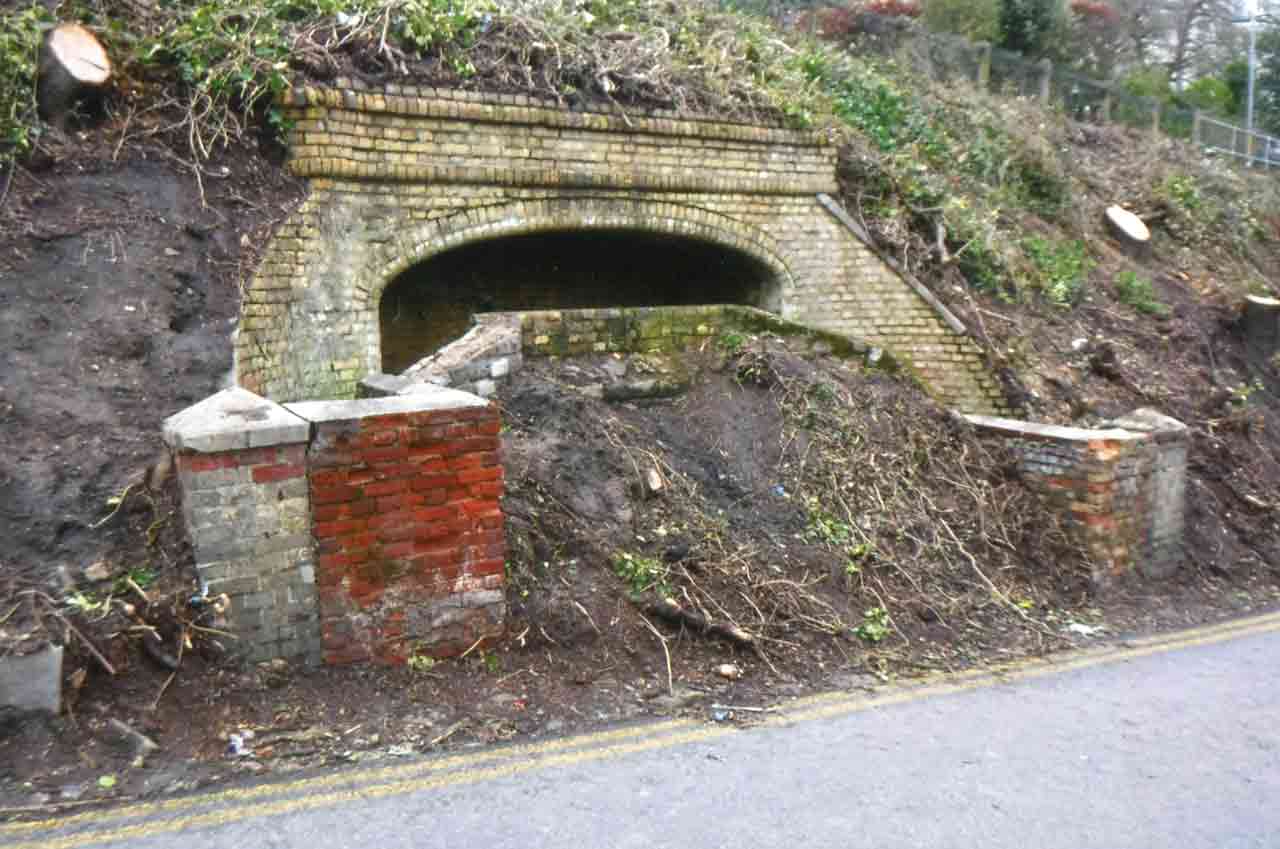The exposed Victorian brick urinal structure Photo: Ray Duff
Words and photos by Ray Duff: Earlier this year, landslips affected the historic Road of Remembrance, prompting the council to take action. Tree and bush clearances were carried out to stabilize the cliff, particularly on the upper half of the road.
In the process, long-hidden structures emerged, visible for the first time in decades due to the removal of dense foliage. Among these structures were Victorian-built urinals and a likely former World War One sentry box located slightly further up the road. In mid-March, our intrepid reporter explored these newly revealed historical features.
Victorian Urinals
The urinals, constructed in the late 19th century, were made from yellow bricks produced by a local brickworks—possibly the one that existed in Blackbull Road at the time. Although the exact purpose and builder remain unknown, ongoing research aims to shed light on their origin.

The remains of the urinals, and the more recent debris Photo: Ray Duff
Positioned into the cliffside on the opposite side of the footpath, remnants of large red signs still mark the now-blocked, curving entrances/exits, cautioning passers by about traffic.
While some original Victorian tiling once adorned these facilities, sadly, it has disappeared over the past few decades. What remains are the sturdy brickwork, urinal basins, slabs, and faint traces of the original pipework fittings.
Interestingly, bricks of the same colour from this era can also be observed in buildings along Rendezvous Street. Many of these structures, dating back to the 1860s, were constructed by individuals like William Garstang. Additionally, similar bricks were used in the construction of the massive brick-lined water tanks beneath Cherry Garden Hill, also known as Waterworks Hill.

Clear remains of the traffic warning sign Photo: Ray Duff
Caution and Preservation
It must be noted though that entry into the structure is very inadvisable due to it being so old and because of later usage by various people which regularly requires clearing. Furthermore, when the road re-opens it will again be very risky to view up close due to traffic.
The structure is however an important local historical survivor in need of a lot of TLC, and will have to be further protected from entry so be ‘viewing only’ from the footpath opposite. Whether it is worthy of a listed status remains to be explored.
Sentry Post
This was a simple stone brick built rectangular slot into the cliff banks just below the top of the road, and is what is thought to have been a WW1 sentry post placed with it. It may have had a seat later but this is not certain. Again it will be merely viewable from the path on the opposite side.

The likely WW1 Sentry Post slot Photo: Ray Duff
Also fully on view were the existing steps down from the Churchyard to the road leading to the slope connecting Road of Remembrance to the rear of Marine Crescent and seafront areas. The former steps next to this have long since been collapsing and have had to be fenced off and very dangerous.

Left – the signs of the original pipework. Right- The internal arch Photos: Ray Duff
Road remains closed
The Road of Remembrance remains closed to traffic for the foreseeable future whilst further checks are done on the cliffs above, in order to find the best way to stabilise them, though the earth slip material is currently being removed.
Photographs
Copies of all photographs taken were placed in the archives at Folkestone’s Heritage Hub with a selection of digital ones also sent to Folkestone Museum.
